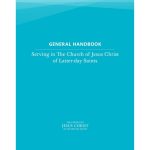AI and the art of chess composition
Researchers at Google DeepMind conducted a study titled In Silico Creativity Assessment: An Expert Review of AI Chess Compositions to explore whether generative artificial intelligence can produce truly creative and aesthetic results.
The project focused on chess composition, using a system designed to generate puzzles with novelty, counterintuitive ideas, and visual elegance. To evaluate these AI-generated problems, three experts in chess aesthetics – international chess composition master Amatzia Avni and grandmasters Jonathan Levitt and Matthew Sadler – were asked to evaluate a set of curated compositions.
Experts were given a booklet of selected puzzles and asked to identify those they found most appealing, commenting on their creativity, challenge and design. Their feedback was generally positive, noting the innovative combination of aesthetic themes and a realistic, extravagant vision. However, they also observed that some positions were too simple and lacked the conceptual depth characteristic of traditional man-made endgame studies.
The evaluators offered constructive suggestions for improvement, encouraging greater strategic richness and more elaborate ancillary avenues in future work. They proposed including puzzles incorporating multiple thematic layers or surprising pattern combinations, allowing the AI to capture the subtlety typical of advanced chess compositions rather than relying on mechanical pattern generation.
The authors also reflected on the difficulty of defining and measuring creativity in chess. They suggest that a puzzle can be considered creative when its solution evokes surprise, challenge, and beauty, while recognizing that such judgments are subjective. Even among experienced experts, opinions differ on what constitutes true originality or aesthetic value, highlighting both the promise and current limitations of AI-generated creativity.
One of the compositions was unanimously praised by the experts.
White has aggressively placed pieces, but an exposed king on f2 and a stray queen on a7. White must succeed in mounting an attack that does not allow counterplay. A single movement in the post achieves all of this.
The winning move is 1.Kg6+!which Amatzia Avni, Jonathan Levitt, and Matthew Sadler called “unorthodox” and “a sacrifice by no means natural or obvious.”
The movement launches the attack by abandoning both towers! Amatza Avni further described this decision as “definitely not what you would consider a candidate’s first decision.”
Read a longer review of the puzzle on the published article…
At the highest level, Benoni is a rare guest, but with this Rustam Kasimdzhanov DVD that could change. New methods and approaches in most lines and countless improvements to official theory will show you how to play this opening at any level successfully.










